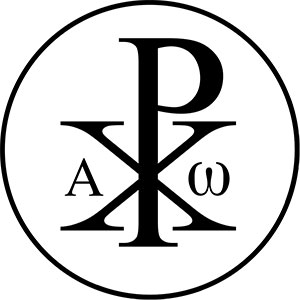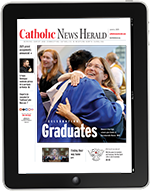Credo: A 12-part series on the creed
Editor's note: This article is the first of 12 in a new series on the Creed by Deacon Matthew Newsome.Explore the series.
 We often speak of “the” creed but the Church in fact employs multiple creeds. The two most familiar are the Nicene Creed, which we profess during the Mass on Sundays, and the Apostles’ Creed, which we recite at the beginning of the rosary. These credal statements have different historical origins, though they profess the same truths.
We often speak of “the” creed but the Church in fact employs multiple creeds. The two most familiar are the Nicene Creed, which we profess during the Mass on Sundays, and the Apostles’ Creed, which we recite at the beginning of the rosary. These credal statements have different historical origins, though they profess the same truths.
The Nicene Creed was formulated during the Councils of Nicea (325 A.D.) and Constantinople (381 A.D.) in response to certain heresies, but the origins of the Apostles’
Creed are more obscure. While there is no evidence that it was composed by the Apostles, as is sometimes claimed, the Catechism says it is “the ancient baptismal symbol of the Church of Rome” and calls it “a faithful summary of the apostles’ faith” (CCC 194).
Perhaps because of its association with the Apostles, it is often divided into twelve articles. There are conveniently 12 months in a year, so to help our readers have a better understanding of the faith we profess, over the course of this year I will be offering monthly expositions on the Apostles’ Creed, beginning this month with the statement, “I believe in God, the Father almighty, creator of heaven and earth.”
The first word of the Creed is "Credo" in Latin or “I believe” in English. This single word gets to the heart of what a creed is: It is a capsule statement of belief useful both as a teaching tool and as a measure of doctrinal union. As the Catechism puts it, “Communion in faith needs a common language of faith, normative for all and uniting all in the same confession of faith” (CCC 185).
A creed, like Dr. Who’s TARDIS, can be described as something “bigger on the inside.” In itself it is small and memorizable, easily fitting on a prayer card. But the truths it expresses are so vast and deep that many volumes could not exhaust its contents.
'I believe'
Let us begin by exploring the words “I believe.”
What does it mean to believe in something? The word “belief” today often indicates a degree of uncertainty. For example, “I believe I may have left the oven on this morning” is not as firm a statement as “I know I left the oven on.” Yet when we use the word “believe” in the context of our faith, we mean something certain – something we would stake our lives on, as the martyrs attest.
These days faith is often presumed to be a less reliable means of knowing than scientific knowledge. The scientific method is a wonderful way of attaining empirical knowledge about the material world. But in fact, most of the knowledge we possess (not only religious truths) is acquired through faith. I believe that this pill will make me better because I have faith in the doctor who prescribed it. I believe that the sun will rise this morning because it has so far risen every day of my life and I trust my own lived experience. Science offers explanations for why these things work as they do, but unless I run the experiments myself and analyze the data, my knowledge rests on the faith I have in the authorities who teach me.
The object of our faith
Faith involves trust in authority, bolstered by reason and affirmed by experience. The greater the authority, the greater trust it warrants. The authority of the Church was given to her by Jesus Christ, attested to by the martyrs, and affirmed over centuries of practice.
This brings us to the object of our faith, God the Father almighty.
By “God,” we don’t mean to refer to one god among many, as the Greeks believed in Zeus, Hera and Poseidon. Atheists often seek to minimalize their unbelief by claiming, “I only believe in one less god than you.” But the Christian God is not a preferred favorite of a pantheon. Sometimes the Egyptian pharaoh Ahkenaten is credited as an early monotheist because during his reign he only permitted worship of the sun-god Aten. This was not true monotheism, but merely a restriction of the cultic worship of the many gods believed in by the ancient Egyptians. The existence of the other gods was still acknowledged, though their cults were suppressed. By contrast, the revealed religion of Israel is truly monotheistic. “The Lord our God is God alone” (Dt 6:4) and “Who is God except the Lord?” (Ps 18:31).
No other gods besides Him
We do not worship the god “of the sun” or “of the sea” or “of the harvest.” Our God is the creator of “heaven and earth” – a Hebrew idiom meaning “all above and below,” referring to everything that is. The origin stories of pagan religions typically begin by describing how their gods came to be. Our origin story begins, “In the beginning,
God created the heavens and the earth” (Gn 1:1). God is a presupposed reality. Everything else comes from Him. In stating that God makes the sun and the moon, the sea and the land, the author of Genesis is asserting that all the things pagans worship as gods are in fact creations made by the one true God.
“The confession of God’s oneness,” the Catechism says, “which has its roots in the divine revelation of the Old Covenant, is inseparable from the profession of God’s existence and is equally fundamental” (CCC 200). “God is unique. There are no other gods besides Him” (CCC 212). This God revealed His divine name to Moses from the burning bush as YHWH, or “I Am Who Am” (Ex 3:14). God simply IS. He alone is the uncreated fullness of being without beginning or end, and the source of all else that exists. He is the Mind, the Power, the Love, and the Meaning that undergirds the entire universe.
And the most beautiful and incredible part of this opening credal statement we profess is that, as creatures made in God’s image (Gn 1:27) and adopted through His Son (Eph 1:5, Rom 8:17), we have the unmerited privilege of knowing the ineffable Creator not only as our God, but our “Father.”
— Deacon Matthew Newsome is the Catholic campus minister at Western Carolina University. He is the author of “The Devout Life: A Modern Guide to Practical Holiness with St. Francis de Sales,” available now from Sophia Institute Press.



